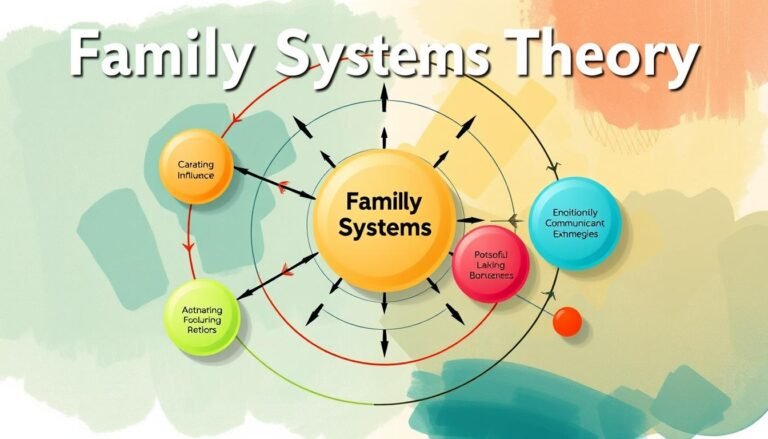Discover MBSR: Transform Your Stress Response
What if you could change how your brain handles stress? Mindfulness-Based Stress Reduction (MBSR) makes this possible. It was created by Jon Kabat-Zinn at UMass Medical Center in 1979. Since then, it has helped many people worldwide manage stress, anxiety, and pain.
This program combines mindfulness meditation, body awareness, and yoga to improve well-being. For over 40 years, MBSR has been changing lives. It teaches people to face challenges with more calm and understanding.
MBSR lasts eight weeks, with weekly two-hour classes and a day-long retreat. Studies show it can reduce chronic pain, lessen anxiety and depression symptoms, and improve life quality. Many believe the $400 cost for an online course ($200 for students) is worth the life-changing benefits.
Are you ready to learn present-moment awareness and build resilience? Let’s see how MBSR can help you deal with life’s challenges more easily and with more energy.
Understanding Mindfulness-Based Stress Reduction (MBSR)
MBSR is a stress reduction method created by Jon Kabat-Zinn in the 1970s. It was developed at the University of Massachusetts Medical School. This eight-week program uses mindfulness and yoga to help people deal with stress, anxiety, and pain.
Origins and Development of MBSR
Kabat-Zinn’s work started MBSR. Early studies showed it improved people’s lives. Now, MBSR is used in hospitals and treatment centers to help with many health issues.
Core Principles of Mindfulness Practice
MBSR focuses on accepting things as they are and being in the moment. It teaches people to watch their thoughts and feelings without judgment. This helps lower stress and brings emotional balance.
The Role of MBSR in Modern Healthcare
More healthcare professionals see MBSR as a helpful addition to usual treatments. It’s shown to help with chronic pain, anxiety, and depression. MBSR is also seen as a good alternative to some therapies and is suggested for preventing depression relapse.
“Nearly 80% of medical schools offered mindfulness training by 2015, highlighting its growing importance in healthcare education.”
Studies show MBSR can greatly reduce stress and improve focus. Because of this, many companies offer MBSR to their employees. They see its value for better work life and productivity.
The Science Behind MBSR’s Effectiveness
The Mindfulness-Based Stress Reduction (MBSR) program was created by Jon Kabat-Zinn in the late 1970s. It has become well-known in the scientific world. This 8-week program includes weekly 2 to 2.5-hour meetings and a silent retreat. It has shown great results in improving mental wellness and reducing stress.
Neurological Changes Associated with Mindfulness
Studies show that regular mindfulness practice changes the brain’s structure and function. These changes help improve emotional resilience and psychological functioning. A study by Kral et al. (2018) found that MBSR participants saw positive changes in brain areas linked to attention and mental health.
Psychological Benefits of Regular MBSR Practice
MBSR has shown significant improvements in mental health. It can reduce anxiety (Goldin and Gross, 2010; Vøllestad et al., 2011) and prevent burnout (Kinnunen et al., 2020). An analysis of 71 studies found that 56 showed positive effects on symptoms, mental health, or quality of life.
Impact on Stress Hormones and Physiological Responses
MBSR’s benefits go beyond mental health, affecting the body too. It has been shown to improve immune function, heart health, blood pressure, cortisol levels, sleep, and chronic pain management (Carlson et al., 2007; Brand et al., 2012; Pascoe et al., 2017; Chen et al., 2020). A study by Schneider (1995) found that MBSR lowered blood pressure in hypertensive patients, similar to medication or lifestyle changes.
“MBSR added to standard cardiac rehabilitation treatment resulted in a 41% reduction in mortality over two years.” – Linden, 1996
These findings highlight MBSR’s potential as a powerful tool for improving mental and physical health. It offers a holistic approach to stress reduction and overall health improvement.
Key Components of an MBSR Program
An MBSR program is a structured way to reduce stress. It lasts eight weeks, with each session lasting 2.5 to 3.5 hours. A full-day retreat is included, usually in the sixth week.
Participants learn many stress reduction techniques. These include mindfulness meditation, body scan exercises, and gentle yoga. Group discussions are also key, allowing people to share their experiences and insights.
Daily home practice is a big part of MBSR. People are asked to spend about 45 minutes each day on mindfulness exercises. This helps them bring mindfulness into their everyday lives.
| Component | Duration | Purpose |
|---|---|---|
| Weekly Sessions | 2.5 – 3.5 hours | Learn and practice techniques |
| Daily Home Practice | 45 minutes | Integrate mindfulness into daily life |
| Full-Day Retreat | 7.5 hours | Intensive practice and reflection |
Research shows MBSR programs have big benefits. People report better stress management, fewer physical symptoms, and higher life satisfaction. These positive effects can last up to four years after the program ends.
MBSR is designed to work alongside traditional medical treatments. It’s open to everyone, no matter their religious background. It focuses on medical and psychological research, making it a large non-religious mindfulness program worldwide.
MBSR Techniques for Stress Management
MBSR offers many stress reduction techniques to change your daily life. This 8-week program mixes mindfulness and meditation to manage stress, anxiety, and chronic pain.
Body scan meditation
Body scan meditation is a key MBSR practice. It focuses on different body parts to increase awareness of the present moment. A 2019 study found it helps lower back pain patients.
Sitting meditation practices
Sitting meditation is a core part of MBSR. It teaches you to focus on your breath, thoughts, and body sensations. A 2015 trial showed it can prevent depression relapse as well as antidepressants.
Mindful movement and yoga
MBSR includes yoga to connect body and mind through gentle exercises. These practices reduce stress and emotional exhaustion in employees, a 2018 review found.
Informal mindfulness exercises
MBSR teaches you to be mindful in daily activities. These exercises help you stay present and accept difficult feelings. The National Health Service says MBSR is safe and rarely causes side effects.
Source Links
- Mindfulness-Based Stress Reduction (MBSR)
- Mindfulness-Based Stress Reduction
- Health Benefits of Mindfulness-Based Stress Reduction
- Mindfulness-based stress reduction
- Mindfulness-based stress reduction (MBSR) – Overview
- Frontiers | Exploring the sustained impact of the Mindfulness-Based Stress Reduction program: a thematic analysis
- Is MBSR Evidence Based?
- The effectiveness of mindfulness-based stress reduction (MBSR) for survivors of breast cancer: study protocol for a randomized controlled trial – Trials
- Mindfulness-based stress reduction: a non-pharmacological approach for chronic illnesses
- 5 Components Of Mindfulness-Based Stress Reduction (MBSR)
- What is MBSR?
- Mindfulness-based stress reduction: Types and benefits
- The Effectiveness of Mindfulness-Based Stress Reduction on the Psychological Functioning of Healthcare Professionals: a Systematic Review








